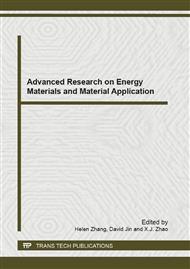p.129
p.133
p.137
p.142
p.146
p.150
p.154
p.158
p.162
Research on Refractory Material Corrosion in Steelmaking Engineering
Abstract:
Researched on the refractory material corrosion by experiments. Each refractory was measured to take four different parts, and the average corrosion thicknesses of silicon carbide, quartz and corundum were 0.52mm, 1.03mm and 1.40mm. The corrosion of corundum refractory was most serious, and quartz refractory had a certain degree of corrosion, but it was not very serious. The corrosion of silicon carbide refractory was the least. In the experiment in intermediate frequency furnace, only upper and lower parts of slag line were connected to the refractory and the degree of corrosion was little for silicon carbide crucible. Slag part of the wall thickness was about 16.6mm after the reaction. Amorphous master alloy parts of the wall thicknessis about 16.9mm. For quartz crucible, refractory corrosion was much bigger, which was 10 mm thick before reaction. The erosion thick was about 2~3mm. It was a little thicker than corrosion experiment in static crucible.
Info:
Periodical:
Pages:
146-149
Citation:
Online since:
October 2012
Authors:
Keywords:
Price:
Сopyright:
© 2012 Trans Tech Publications Ltd. All Rights Reserved
Share:
Citation:


